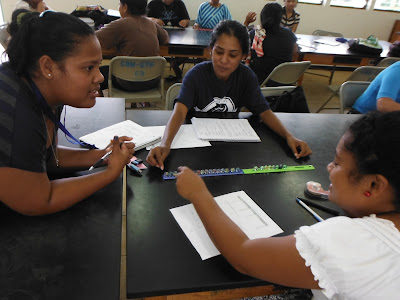Closing the loop on assessment

During the time between terms is when I am reminded of the keystone that keeps my assessment loop closed. Once I finish my term end assessment I go to work on my calendar and syllabus for the next term. Not an HTML table: an SVG graphic with every element a hyperlink My combination calendar-syllabus is actually an HTML5+SVG page built using only text editors. This allows me to tuck comments directly into the code. As the term progresses I make notes in the comments of the actual web page. SVG code with comments underneath the pseudo-table seen above What I did when, and why, are in those comments. I also slip in links to blog articles with more details on what I attempted and whether it worked. Thus assessment is fresh in mind when I work on the syllabus, and all the notes from prior terms are there before me in my code as I work on designing the next run of the course. Coupled with a statistics text that I also control and the course evolves and improves term after ...





